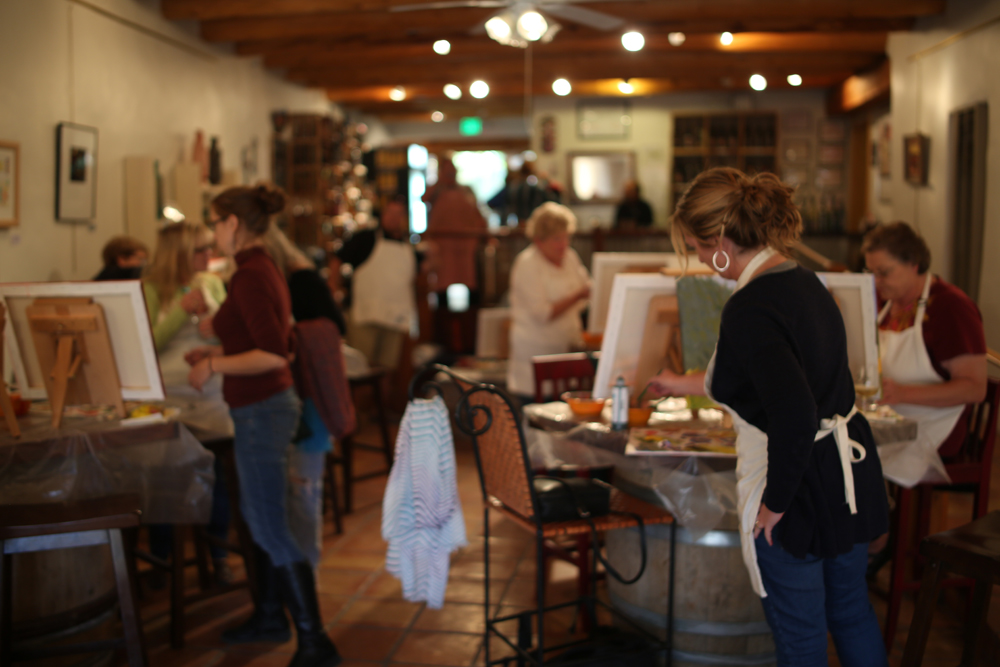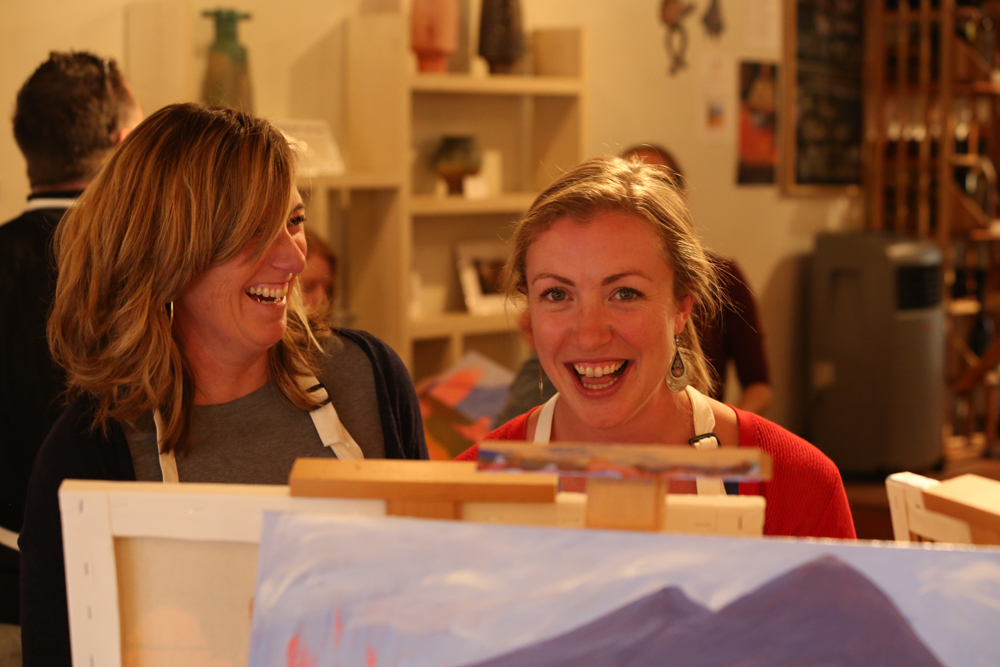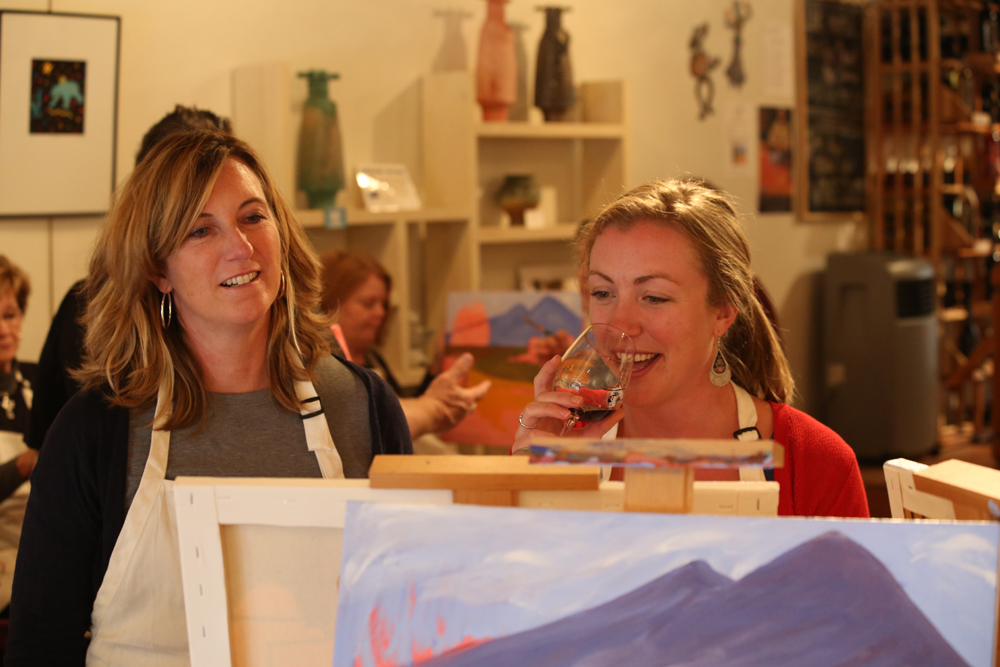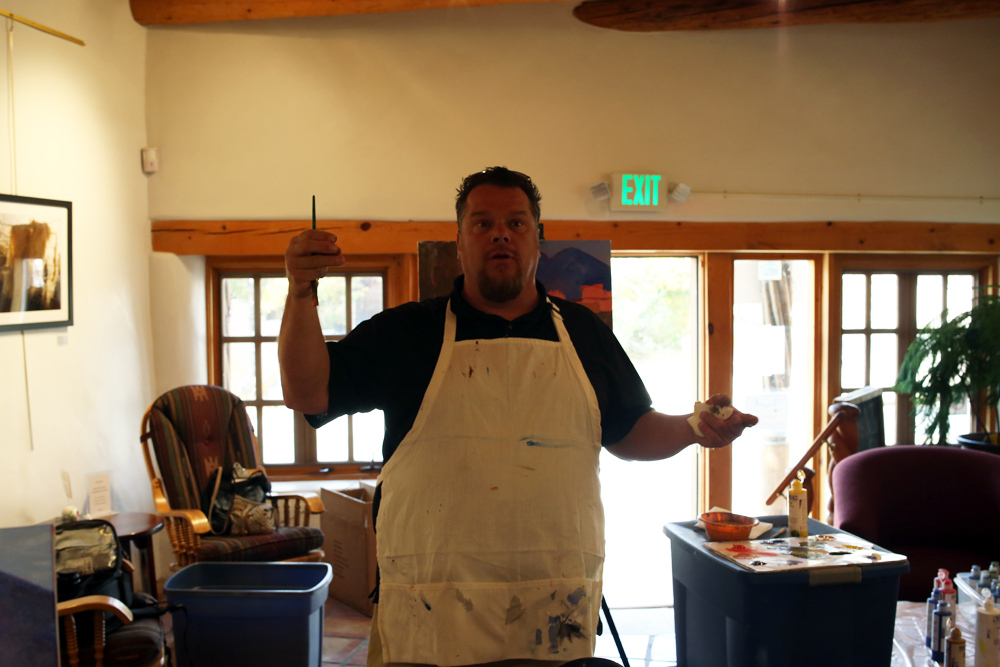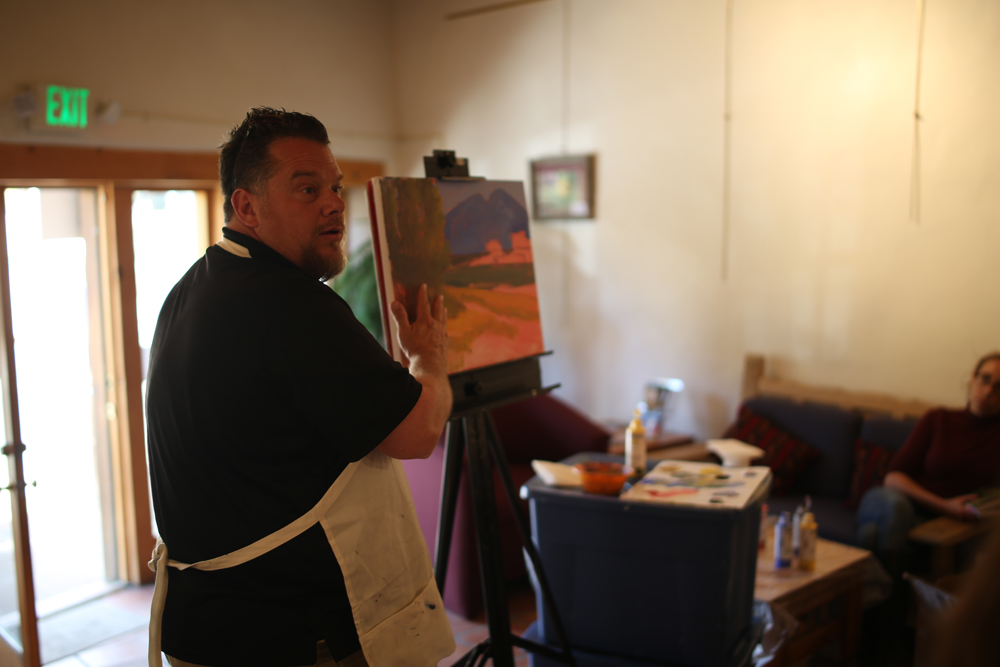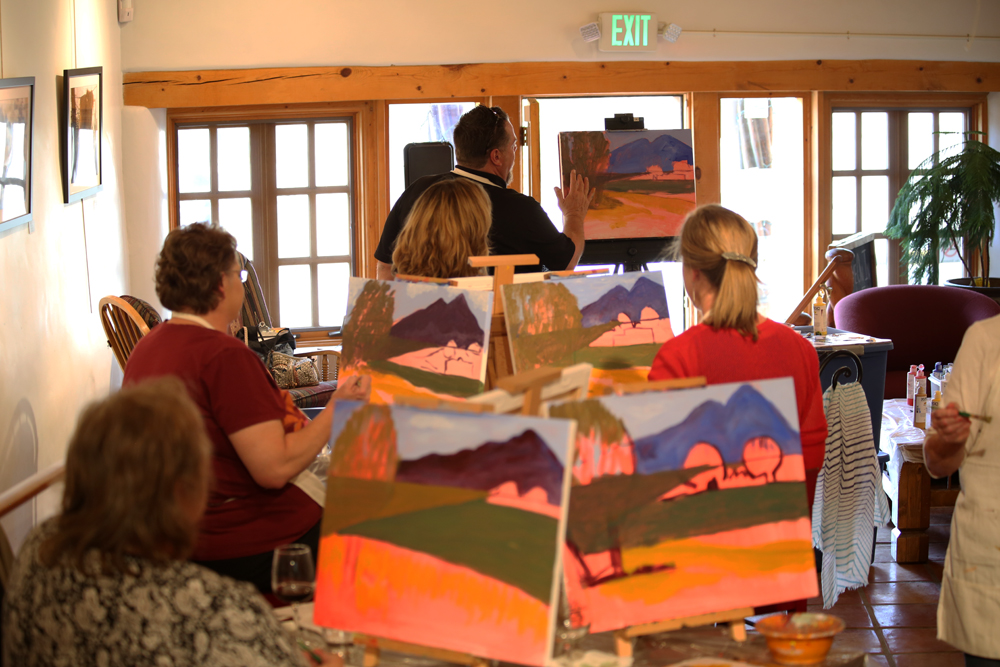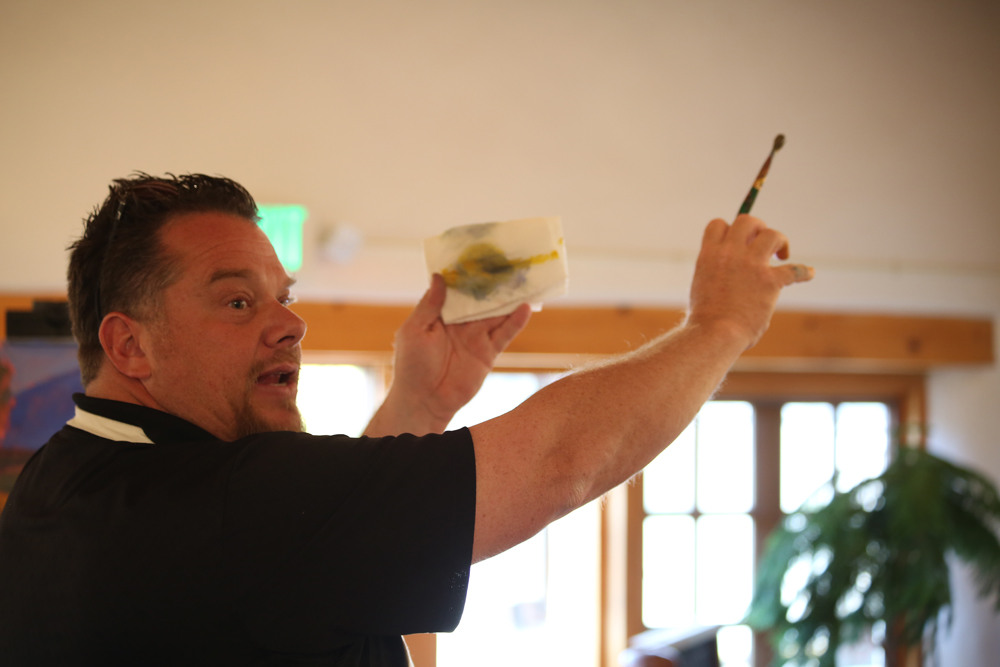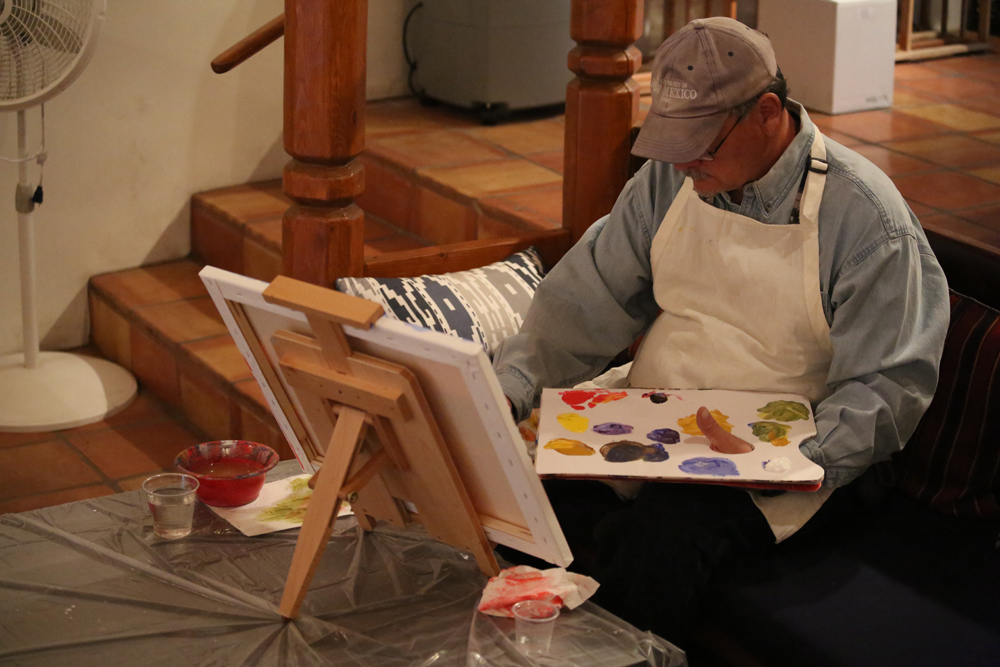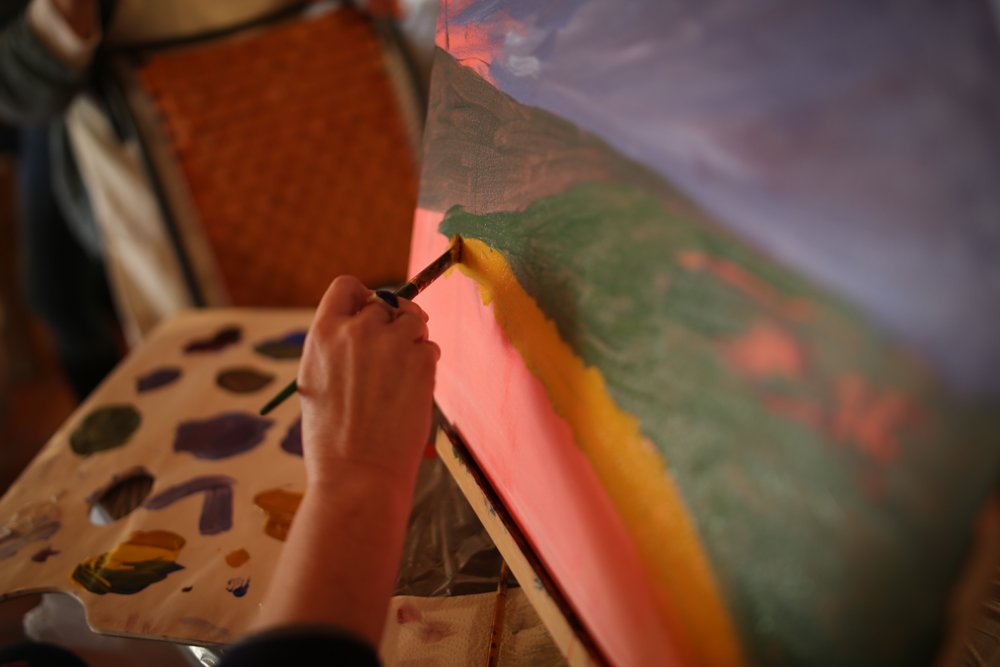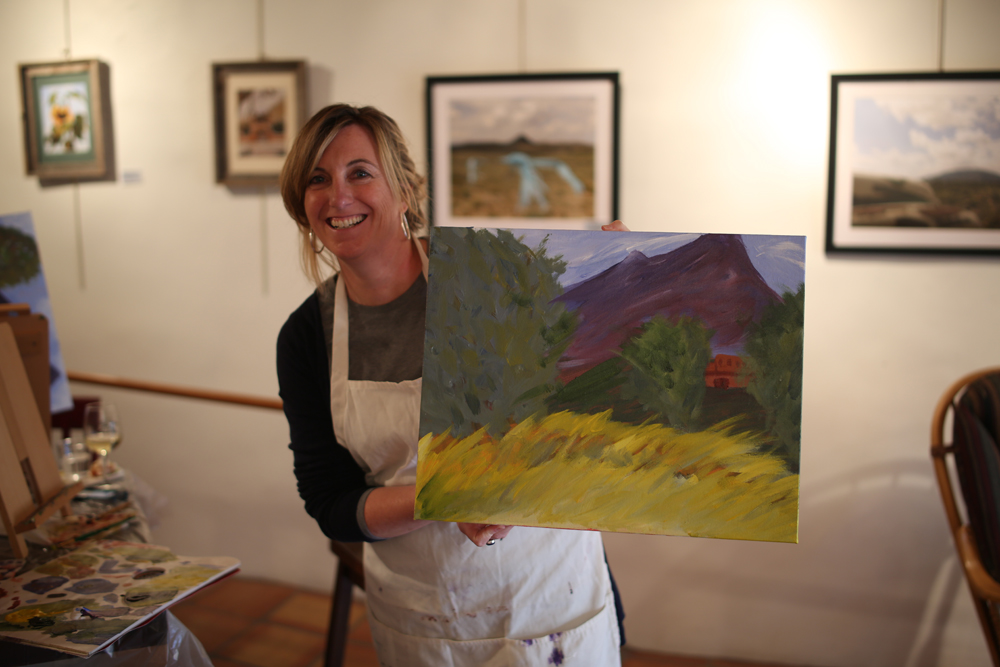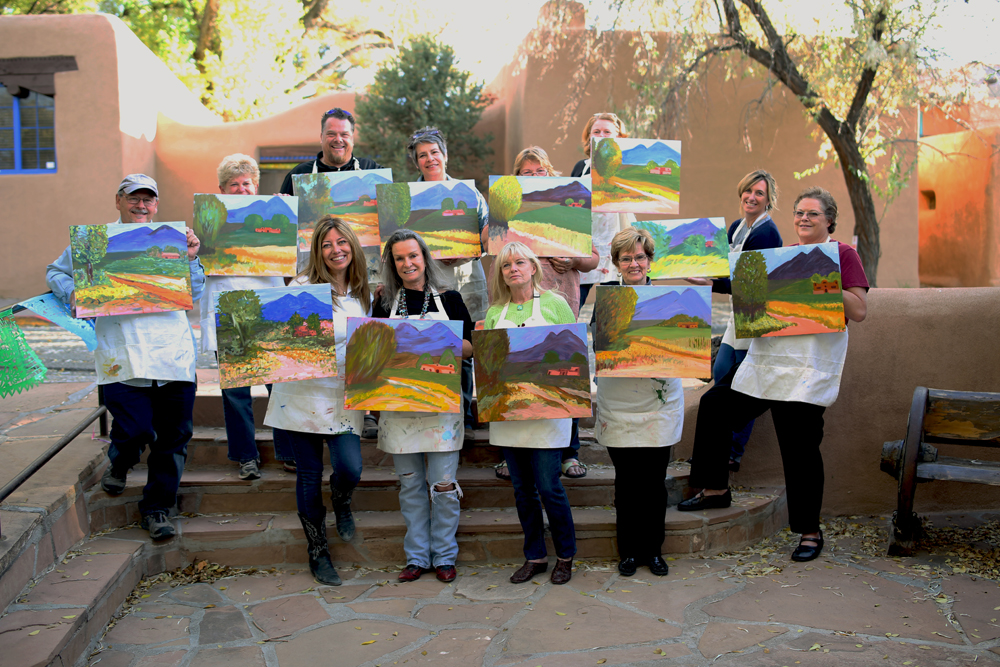On Sunday, Kelley Tredwin and I headed to Black Mesa Winery’s Taos Tasting Room to participate in our first-ever Arts and Carafe. Arts and Carafe-style events, sometimes called “painting parties,” appear to be sweeping the nation, and given the simplicity of the basic premise, their popularity makes sense.
Essentially: you show up, with or without friends; they provide art supplies and an artist to guide the process; you drink wine and happily splash your blank canvas with hopefully-inexpensive acrylic paints and attempt to not make too much of a fool of yourself. And voila! You leave with the memory of a lovely Sunday afternoon, complete with a masterpiece to take home and hang on your wall (or hide under your bed, depending on your self-esteem level).
Kelley and I arrived at Black Mesa in varying states of preparation, by which I mean that I was wracked with nerves and she seemed cool as a cucumber. As a general rule, I don’t really do things in public if I’m not confident that I’m already pretty good at whatever the activity in question is. This results in unreasonably high expectations for myself whenever I’m embarking on a new pursuit, creative or otherwise. (Kelley, who suffers from no such delusions of grandeur, was significantly more relaxed.) Our tablemate, Taos Chamber of Commerce’s Susan Cady, was a veteran Arts and Carafe-r, and assured us we’d love it. I settled in with a glass of the Tempranillo and hoped for the best.
- Black Mesa Winery Tasting Room
- Kelley and Rita
- Most of class looked like this.
- Rich arrives!
The Arts and Carafe folks provide all the materials, down to the aprons, so you can just roll in and get started. When our teacher Rich Nichols arrived, we were off to the races. The painting we were all going to be re-creating was called “The Edge of the Desert,” one of Rich’s originals. Apparently the teacher usually shows the “final product” (the painting upon which class is based) at the beginning of the class, but this week Rich opted to let us fly blind (which I much preferred — nothing to live up to! oh, glory!).
He walked us step by step through the process, beginning with a red wash of the entire canvas. Then in went the horizon line, just a bit above the middle. Then we added the mountains, the sky, a path, an adobe, some asters. Bit by bit, a Taos scene emerged from each of our brushes. (I’ll be the first to admit that it took some time for the paintings to evolve past the place where all I could see was a series of boobs, but we got there eventually.)
Contrary to my vague memories of junior high art class, Rich showed us how he doesn’t hold the paint brush like a pencil, but like a conductor’s baton. He also taught us how to hold the brush sideways and “scumble” the paint onto the canvas. (Scumble was a new word for most of us, and throughout the class we referred to the technique alternately as “scuffling,” “scuttling,” and “scrambling,” all of which proved to be more or less accurate.)
Early on, someone asked Rich where he typically starts his paintings. “It really depends on the scene where you start. A lot of times, I just let the painting speak to me. But often it happens to be the sky, and I work my way down from there,” Rich explained.
“By the way, there is no perfect El Salto, no perfect top of the mountain. The art police are not going to come in here and stop you,” Rich told us. He also continually reminded us to “Breathe, breathe!” The class loosened up considerably as time waned (wined?) on, and soon we were laughing, chatting, and joking as a group, wandering around the room complimenting each others’ individual takes on the piece.
In no time, we’d reached the end of the two-ish hour session (three Tempranillos in, who’s paying attention to the time?), and everyone had their own Edge of the Desert to show off. It was honestly remarkable how varied each of the paintings turned out to be, and what great fun the whole thing was.
Now, as my finished product below will attest, I’m not a visual artist — nor do I aspire to be one — so my experience was much more about having fun exploring something completely out of my comfort zone than it was about actually practicing a craft with long-term intentions. That said, there were a couple of participants in class who are painters, and treat Arts and Carafe as a two-hour “master class” — a way to get out of their own studios, work with other painters and learn new techniques, and just generally shake things up. (David, pictured below right, is one such artist.) So the appeal seems to be pretty broadly varied.
And ok, at $35 – $45 a class (plus wine, of course!), it’s maybe not the cheapest recreational Sunday afternoon, but for my part, it had plenty of bang for the buck.
You can find the Taos Arts and Carafe schedule here, and sign up for future classes. There are two glass art classes coming up, as well as other painting classes like the one we attended.
- Rita’s final product
- Kelley with her final product
- David and his final painting

